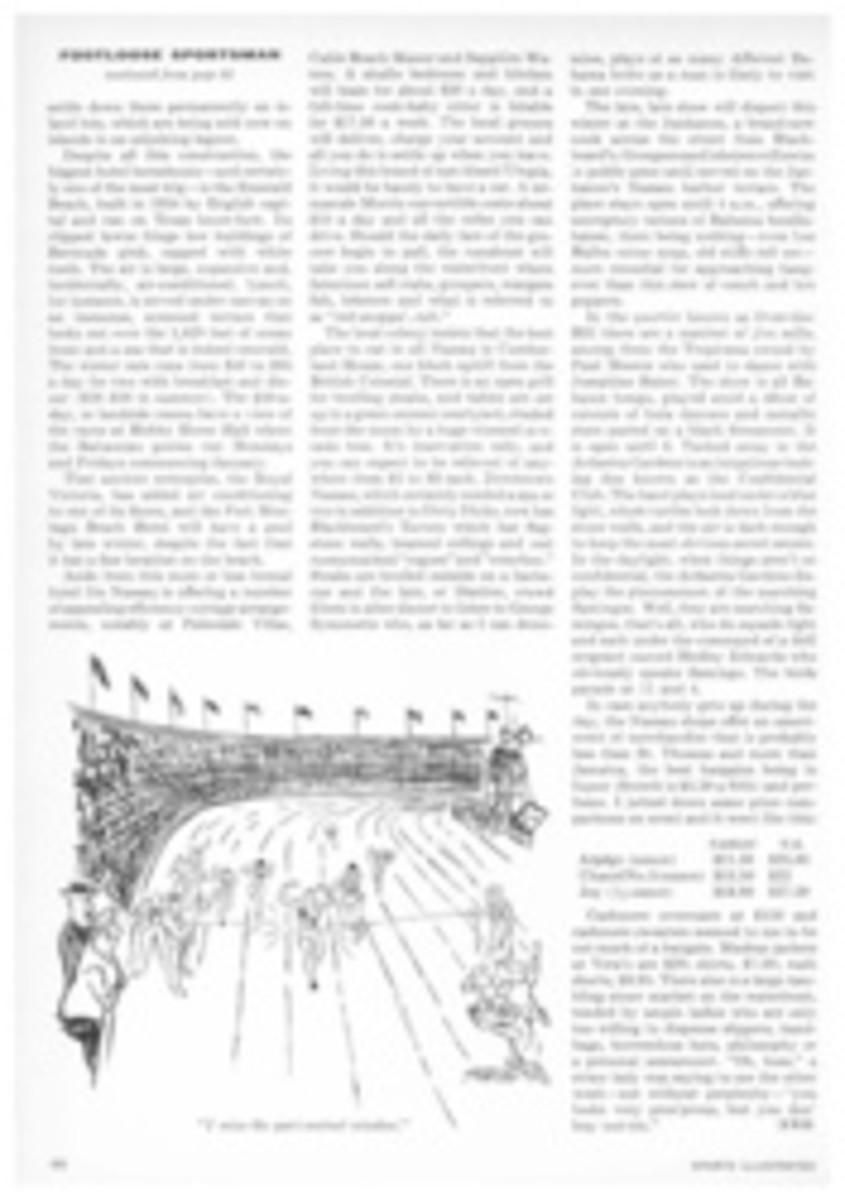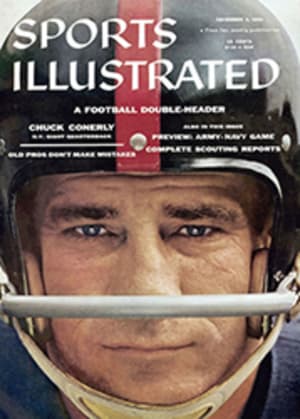
WILD AND WET
It is Questionable whether San Francisco Bay sailing is a sport or a masochistic exercise. Furthermore, it is hard to say which season, summer or winter, is the more rugged. Bay winds blow from 12 to 25 mph on the average, and races have consistently been held in winds up to 35 mph. Summer has this slight advantage: the winds are westerly and predictable, always coming in strongly through the Golden Gate. In the winter they come from everywhere. Winter temperatures are slightly lower, but it is doubtful if the chillier air can match, for pure discomfort, the wringing-wet summer fogs which blanket the bay through all but midday. In short, the bay is as choppy, unfriendly and unpredictable a body of water as ever faced a yachtsman.
Yet San Francisco sailors love it. In fact, there is little anyone can do to keep them off the bay. It's known as the place where yachtsmen sail longer, harder and with more hard work than anywhere else. Bay sailors don't haul their boats: they just elevate them briefly in the spring for a little washing down and repair work. Winter on the bay is a series of continuous frostbite regattas. The word frostbite was invented to describe the winter dinghy races in which a few hardy Yankee souls compete, but winter sailing is a thing San Franciscans do as a matter of course in every class of boat available.
Typical is the fascinating event held annually on Easter Sunday. About 40 presumably sane adults start off from the Sausalito docks and head across to the San Francisco Marina in little eight-foot El Toro dinghies never made for the stern conditions of the main bay. There are just three rules. Sailors must be over 21, must wear life jackets and carry paddles which can be used anytime. Last Easter five El Toros went into the drink. The Coast Guard takes a jaundiced view of the whole thing but hasn't figured out how to stop it.
The racing season officially gets under way in mid-May with a spectacular opening day parade. Five hundred sail-and motorboats start under the Golden Gate and proceed to the Corinthian Yacht Club on the Marin County side. The first big race of the season is held the following week from the Corinthian north to Vallejo 40 miles away where follows one of the few big yachting blowouts of the year. In general, continuous socializing is left to the more effete yachting centers.
Starting with the Vallejo Race, there is a summer high-point series for big and little classes, plus noncompetitive diversions like sails to Santa Cruz or Pebble Beach. In late fall, if the University of California-Stanford game is at California, there is a fizz breakfast at each yacht club and then a sail to the Berkeley Yacht Basin and a bus trip overland to the stadium.
But to San Franciscans all this is just an appetizer. The real, or winter, sailing begins with the first race of the Mid-Winter Regatta held late in November and then every first weekend of the month through March. There are nominally five races, but last year three of these were washed out and the last one was rescheduled, a rarity in the bay, where just average bad weather never keeps a race from starting.
Most of the classes in the Mid-Winter have a strange sound to Easterners: Farallon Clippers, Rhodes 33s, Bears, Birds, Zephyrs, Mercurys and El Toros. There is a reason for this: the brutal facts of sailing in the bay have caused a local evolution in yacht design. The slim, high-masted boats which do so well elsewhere find the bay awfully rough. The Star boats, for instance, have to be started early in the morning and on short courses so they can get back before the chop and the high winds set in. Even so, the Star skippers take an unmerciful soaking. "Always wet from the waist down and bailing," was one bay sailor's classification of Star skippers.
After a few frightening experiences, many an owner of an eastern design has had his boat's mast cut down and ballast added. But alteration is not the answer. Naval architects have had to come up with new and more rugged designs. The Farallon Clipper, a 38-footer designed by the Stephens brothers of Stockton, Calif. for the outer bay, is a constant Honolulu Race competitor, and one of them has won the Honolulu-Tahiti Race. The 23-foot Bear is a stiff and stubby little Bay one-design which handles beautifully in a half a gale. The Bird class (see opposite page) is a fine compromise. Thirty feet long, it carries 1,200 pounds of ballast well forward and loves rough going.
Any mid-winter sailor feels he has the right to claim a certain stature. A San Francisco winter sailor has something extra. He rounds marks that bring him the entire length of the Golden Gate under the high headlands of Marin County and Mt. Tamalpais, by the lofty Bay Bridge and the graceful new Richmond-San Rafael span. And when the whole bay is a soul-satisfying witch's cauldron, he is sure that this is the ruggedest, coldest, wettest and most beautiful place in the world to sail.
Anne Lyon, Connie Clark, Bob Morse and Skipper Bob Lackenbach brace themselves as the 30-foot Bird class sloop "Cuckoo" heels over in stiff breeze
Fog rolls in from Pacific under north tower of Golden Gate Bridge as seven Rhodes 33 racers shoot past smaller sloop (far right) and spectator boat (in foreground) during winter series in San Francisco Bay
Skippers ready El Toro class dinghies under pale winter sun in preparation for weekly frostbite race
THREE PHOTOS
FRED LYON
For season's results in deep water yacht races see Scoreboard

